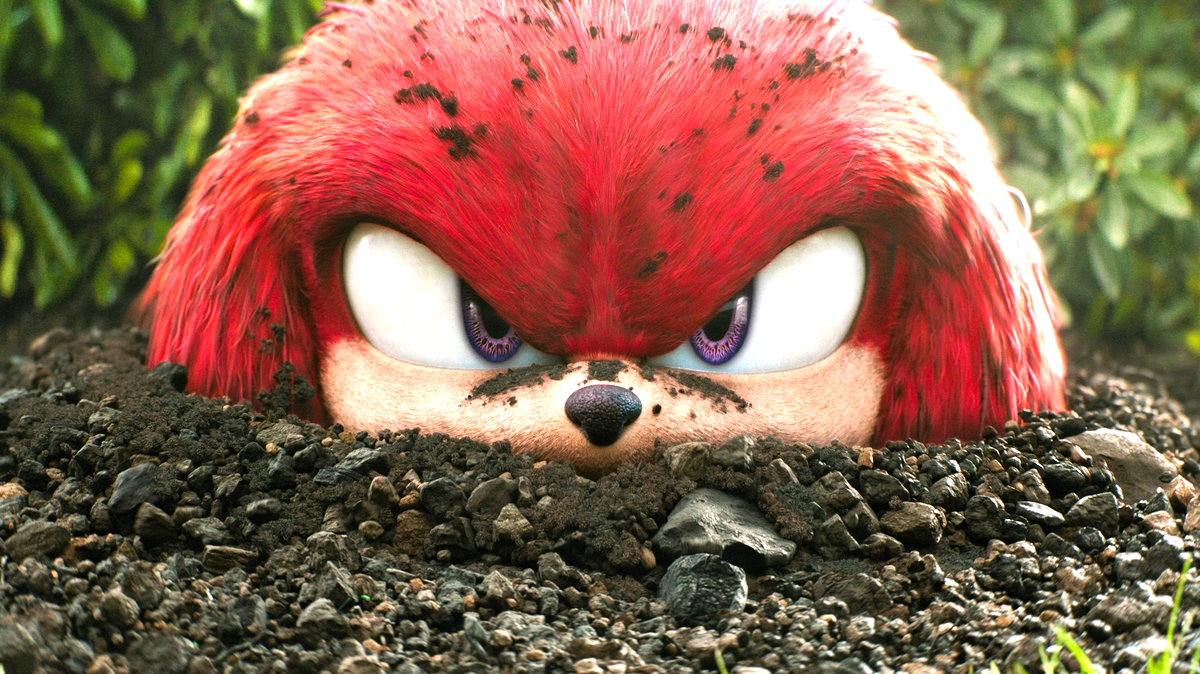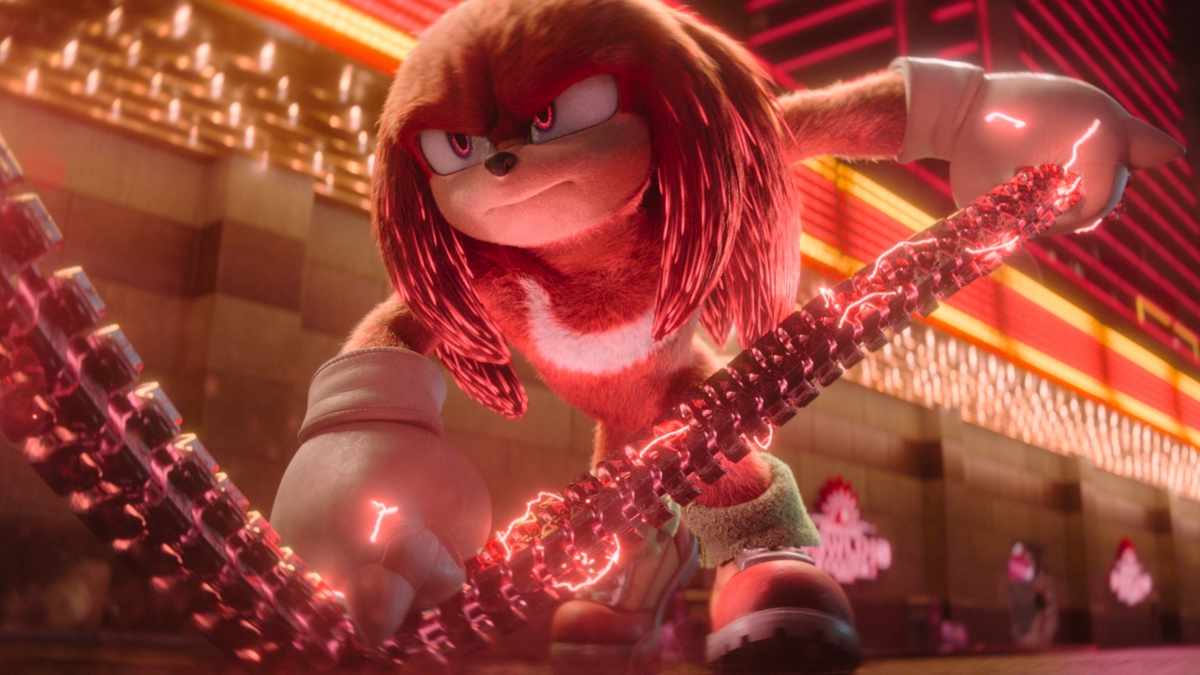
Based on the popular Japanese game show of the same name, Hole in the Wall is a Kinect only XBLA game that forces gamers to become limber contortionists. Its interesting premise sees competitors trying to fit themselves through a specific shaped opening in an oncoming wall. Succeeding means the chance to try another wall, while failure gives players a strike. Three strikes and you’re out, like the old baseball adage states. Of course, since it’s based on a Japanese game show, being out refers to the wall pushing its human opposition into a waiting pool of water. Luckily, Kinect doesn’t come equipped with that type of virtual reality technology, so we’re safe.
Hole in the Wall is a lot like “Human Tetris,” in which people must form their bodies into shapes in order to get through oncoming walls. However, in this version, the shapes are much more natural. Examples of the holes include a baseball player swinging for the fences, a curved arrow, a crouching man with his arms help up in a triangle and a ballerina. As you can expect, the latter is pretty difficult to beat, requiring some pretty good balance – something I admittedly do not have. The good thing is that I’m able to laugh at myself and went into this creative game show experience with an open mind and a smile on my face.
I spent time with each of the game’s two modes: the traditional game show and its three strike rule being the main one. The other one being quick play, which brings with it a succession of walls with no room for error. One missed cut-out means a dip in the pool, so it really requires you to be on your toes. No matter which mode you choose, the gameplay is pretty much the same other than the aforementioned rule changes. It’s a one note affair without much variety.
There are just two modes and leaderboards, though you can’t really expect much more out of a game based on a humorous television challenge show. The scoring system is quite simple but well designed however, with a colourful indicator letting players know if they’re inside or outside of the hole, with various different shades displaying how well you’re doing at any certain point. This removes the need for any sort of an on-screen overlay, meaning that there’s nothing obtrusive cluttering the screen. Not only does this increase the amount of potential immersion, but it also makes the game feel even more like its televised inspiration.
What makes Hole in the Wall such a good fit for this device is how easy it is to just jump in and play. Groups can get together to form a couple teams of two (the red and blue teams), who challenge each other to see which couplet happens to be the most limber. Putting this one during a social gathering would be ideal as the premise alone gets people involved, interested and entertained. The two players stand on the virtual reality play mat, with one responsible for fitting into a cut-out on the left, and one needing to do the same on the right-hand side. The walls are quite a big, so there’s no worry about there being limited space available, which is nice.
Due to my interest in its subject matter, I was quite excited to give Hole in the Wall a shot. However, that excitement dissipated rather quickly when some issue started to pop up and the game started to fail to properly recognize my location. An issue that basically crippled my enthusiasm and experience all at once. Because of these issues, I was unable to progress far into the game, which got quite frustrating as you can surely imagine. The frustration was further aggravated by the fact that I really wanted to like this game. Fruit Ninja Kinect was an absolute blast and is something that I can see myself continually going back to. It’s too bad this title couldn’t have followed suit.

Quick play mode worked a bit better than the core game show simulation. Out of the four rounds within the first show, I could only complete two. Not because of a lack of effort or an obvious failure to meet the requirements, though. In fact, the on-screen shadow actually showed that I was doing better as the show progressed.
While the earlier rounds allowed for me to succeed while only having about 80% of my body inside the digital hole, the later ones seemed to require pixel perfect precision. It’s something I attempted to comply with several times, failing to do so each time. The peripheral and its coded abilities found within the game’s design, just would not register that I was almost perfectly within the oncoming openings.
Now, you may be shouting out loud, saying that it’s my Kinect device’s fault. That’s exactly what this opinionated reviewer was thinking. Because of this, I moved the peripheral and even tried resetting it by using the supplied card. The few minutes spent moving around the bedroom, adjusting the sensor by positioning the card at certain depths, seemed to do little to help. Also, since Fruit Ninja Kinect didn’t have any issues detecting my movement, that helped me rule out any sort of defect.
If it wasn’t for the detection issues, Hole in the Wall would be something I’d recommend. Its simplicity creates an engaging and immersive experience that allows families and friends to participate without much previous gaming experience. Gamers’ significant others who maybe wouldn’t normally be into the virtual escapades that traditional games bring with them, would have the opportunity to participate easily, becoming involved in a hobby that they may have dismissed previously. There’s a pretty solid ‘could have been’ story here, but it unfortunately didn’t transpire.
Visually, the game isn’t very impressive. Basic 3D visuals are utilized to create the look of the television show, reminding me of the visual stylings found in Doritos Crash Course. It works okay, but doesn’t show much creativity or feature any extra content to make the game visually exciting. The main problem here is the great amount of pixellation which can be easily noticed during each opening cinematic and some gameplay moments.
Where it does excel however, is in showing the players’ avatars, allowing for he or she to complete some pretty funny movements/positions. The comedy is furthered by the Kinect camera and its ability to snap pictures during gameplay, letting you go back and laugh at them whenever.
Dissecting the audio isn’t an arduous job because there isn’t a lot to it. There’s a repetitive soundtrack mixed in with a couple brief announcements. Nothing special, nor anything that will keep you coming back. Unfortunately, it’s all pretty forgettable. I personally feel that it’s a missed opportunity considering the creative qualities and inherent humour found within the real-life game show that the game is based on. Adding a good commentator or some comedic remarks could have made things a bit better.
I must conclude by saying that Hole in the Wall is a missed opportunity. A game that could have excelled within the casual market if it had some more refined movement sensing mechanics inside. A fun premise that unfortunately has turned into a frustrating and imprecise game, with forgettable visuals and audio. Perhaps a patch can be released in the future to make things a bit easier.
However, at this current point in time, this is a game that is hard to recommend. It’s too bad because, combining an interesting and entertaining idea with great motion controls, could have made Ludia‘s ten dollar downloadable title a hit.
Hole in the Wall was released on August 24, 2011, for the XBOX 360. We received a copy of the game for review purposes.






